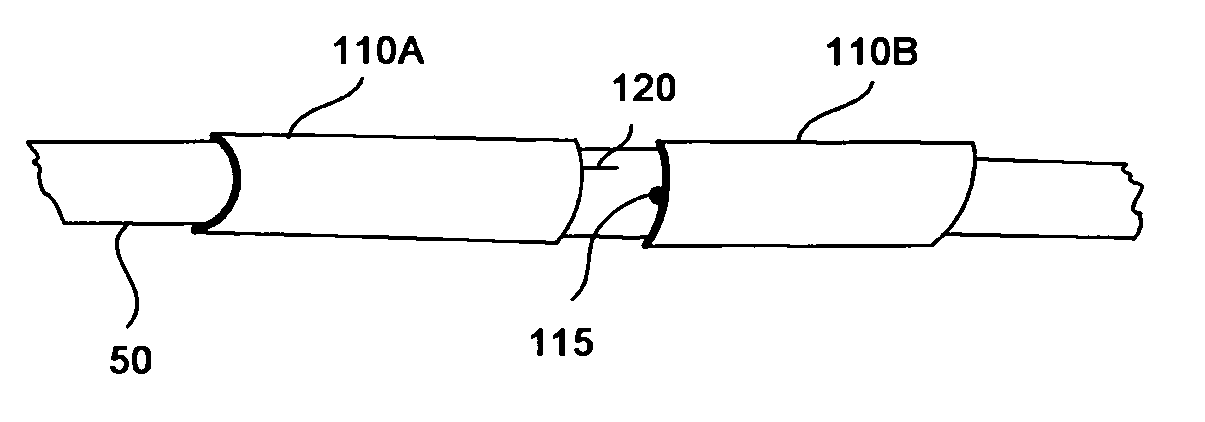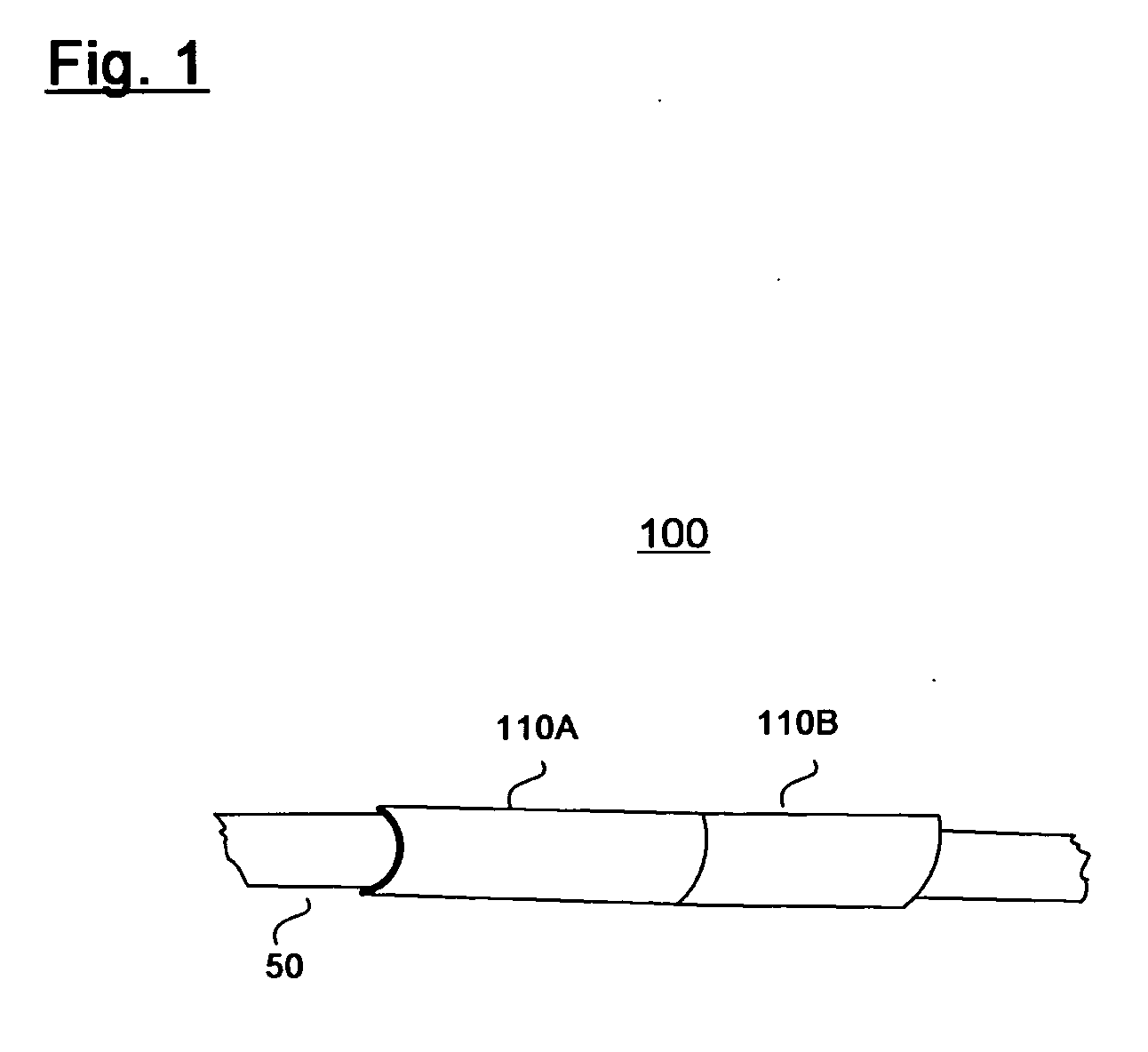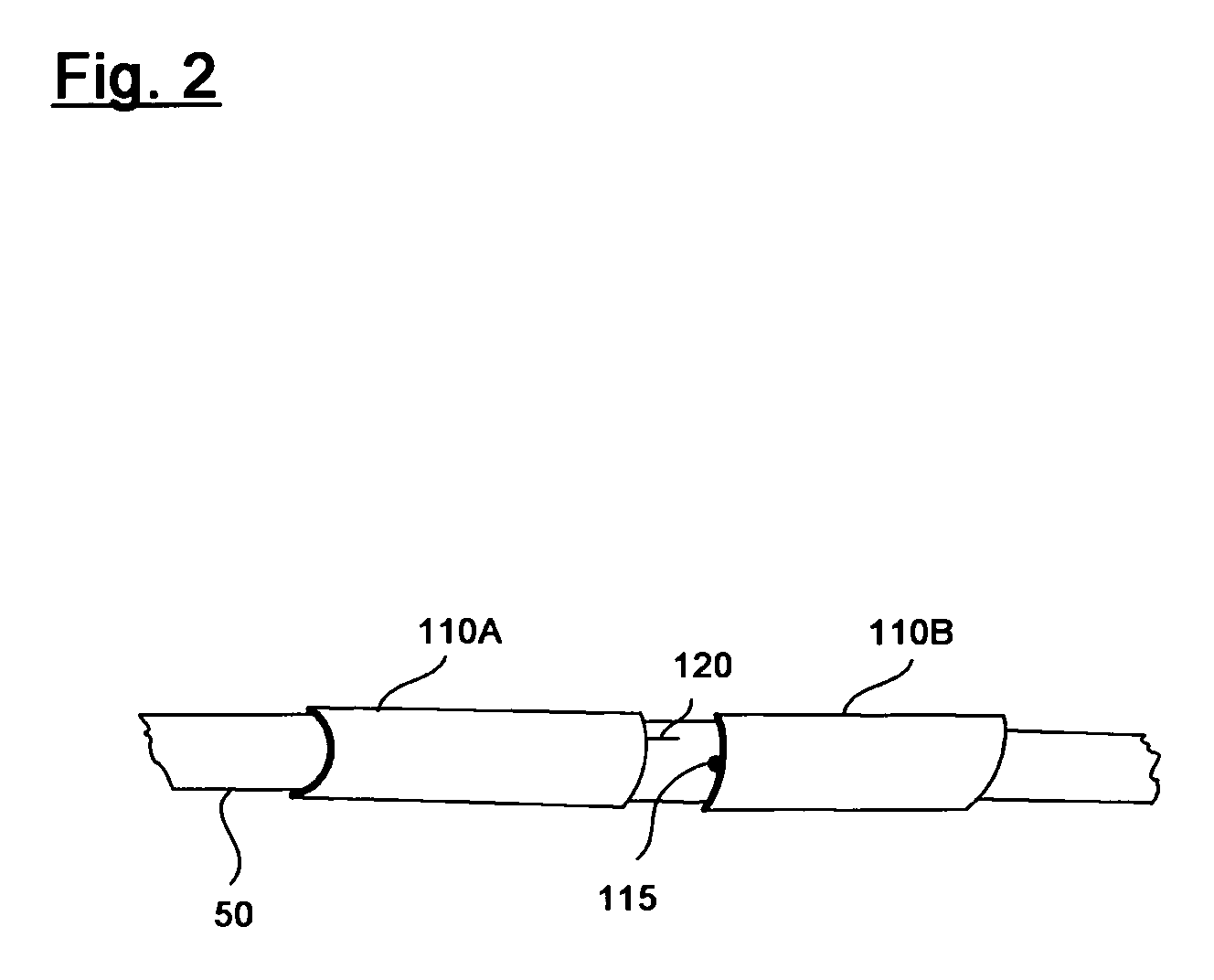Modular RFID tag
a module and tag technology, applied in the field of radio frequency identification systems, can solve the problems of limited information that the symbols can contain, inductively coupled tags remain relatively expensive, and limited in size, so as to achieve the effect of convenient use and cheapness
- Summary
- Abstract
- Description
- Claims
- Application Information
AI Technical Summary
Benefits of technology
Problems solved by technology
Method used
Image
Examples
Embodiment Construction
[0033] The following description is intended to convey a thorough understanding of the embodiments described by providing a number of specific embodiments and details involving modular RFID transponder tags and method of manufacturing modular RFID transponder tags. It is understood, however, that the present invention is not limited to these specific embodiments and details, which are exemplary only. It is further understood that one possessing ordinary skill in the art, in light of known systems and methods, would appreciate the use of the invention for its intended purposes and benefits in any number of alternative embodiments, depending upon specific design and other needs.
[0034] As used herein, the expressions “RFID tag” and “RFID transponder tag” will refer to any active or passive type of electronic data storage device, read-only or read and write, that is wirelessly activated in the presence of a radio frequency (RF) field, including any currently available inductively coupl...
PUM
 Login to View More
Login to View More Abstract
Description
Claims
Application Information
 Login to View More
Login to View More - R&D
- Intellectual Property
- Life Sciences
- Materials
- Tech Scout
- Unparalleled Data Quality
- Higher Quality Content
- 60% Fewer Hallucinations
Browse by: Latest US Patents, China's latest patents, Technical Efficacy Thesaurus, Application Domain, Technology Topic, Popular Technical Reports.
© 2025 PatSnap. All rights reserved.Legal|Privacy policy|Modern Slavery Act Transparency Statement|Sitemap|About US| Contact US: help@patsnap.com



